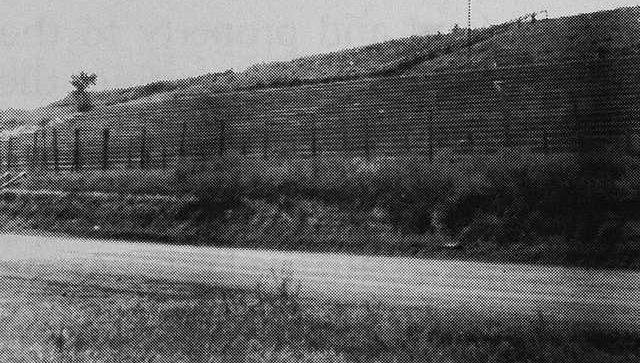If you've been wondering about something in your community, Ask The Times is your place to get it answered. The following question was submitted by a reader and answered through the efforts of our news staff.
Why were the houses, barns and fences not torn down and removed before Lake Lanier filled up?
Lake Lanier swallowed much of North Georgia's history as the waters inched up to create the reservoir that now serves as a crucial water source and important tourism draw.
Farms that were passed from generation to generation, an old dirt racetrack that can still be seen when water levels drop, old mills and bridges - all slowly were covered in the 1950s.
About 700 families were relocated to make way for the lake, according to Times archives.
The first tract of land bought was that of Henry Shadburn, an 81-year-old Forsyth County farmer. His homeplace and 100 acres were purchased for $4,100.
He and his family relocated, but a photo of Shadburn sitting on his new front porch has a caption that reads, "It'll never feel like home."
For many families, houses were moved before the lake claimed them, according to "Lake Sidney Lanier: A Storybook Site" by Robert David Coughlin. Some moving expenses were reimbursed by the government.
Buildings not removed by the owners were either removed by a government contractor or sold to the public, according to Coughlin.
As the lake crept toward its full pool level of 1,070 feet above sea level, warnings were posted to keep people from boating or swimming in the rising waters, Coughlin wrote. Treetops, bridge piers, abandoned chimneys and fences posed hazards.
According to Glen Kyle, director of the Northeast Georgia History Center, structures were removed according to how deep they would be once the lake filled.
"If it was going to be far enough underneath the planned full pool, it just wasn't worth the time or the effort to tear them down," he said. "Especially if they were wood, they would eventually deteriorate to a certain point."
Columnist and former Times editor Johnny Vardeman said many trees also were cut down so they wouldn't be hazardous to boats.
According to Coughlin's book, when the lake reached 1,033 feet above sea level in March 1957, crews scoured the lake in boats cutting tree tops to provide a safety margin for future swimmers and boaters.
A total 9,390 acres of trees were cut.
Some large trees were left to attract fish.
Other considerations as the lake filled included relocating roads and bridges. Coughlin wrote that government officials stationed men on bridges to count the vehicles traveling across in order to determine which bridges should be replaced.
Those that would traverse too large a span of water were removed.
The most popular routes were most likely to be preserved.
Structures weren't the only things relocated. According to Coughlin, some gravesites were moved.
One family moved the grave of the builder of their old log home as well as the nearby gravesites
of slaves.
As the waters drowned forests of trees, their colors changed with no mind to the season, according to Coughlin.
They changed much as the landscape did, slowly but definitely, as the waters turned from river to lake.
Do you have a question you'd like our news team to answer? Contact us at:
askthetimes@gainesvilletimes.com
facebook.com/gainesvilletimes
@gtimes

